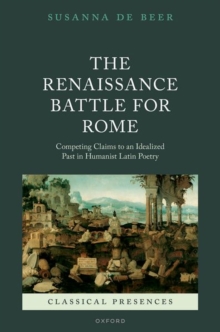
Greece and Rome at the Crystal Palace : Classical Sculpture and Modern Britain, 1854-1936 PDF
by Kate Nichols
Part of the Classical Presences series
Description
The marble halls of the British Museum might seem the natural habitat for classical sculpture, but in the nineteenth century its sombre displays were far from being the only place that people encountered antiquities.
From 1854, a rival collection of classical sculpture, comprising plaster casts from major European museums and scaled down architectural features, was on show in the South London suburb of Sydenham, in the Crystal Palace which had housed the GreatExhibition of 1851.
By the late 1850s, two million visitors were passing through the glass doors of the Sydenham Crystal Palace each year, more than twice as many as recorded at the British Museum.
Many more people, and from a greater variety of social strata, saw the painted cast of the Parthenon friezein Sydenham than the original in Bloomsbury. Utilizing an extensive variety of archival material, including diaries, scrapbooks and photographs, Greece and Rome at the Crystal Palace evokes visitor experiences at Sydenham, and examines the discussion that arose around the presentation of classical plaster casts to a mass audience.
It uncovers the social, political, and aesthetic role of ancient Greek and Roman sculpture in modern Britain, assessing how classical art figured in debates over design reform, taste, beauty andmorality, class and gender, and race and imperialism.
Information
-
Download - Immediately Available
- Format:PDF
- Pages:328 pages
- Publisher:OUP Oxford
- Publication Date:26/03/2015
- Category:
- ISBN:9780191016912
Information
-
Download - Immediately Available
- Format:PDF
- Pages:328 pages
- Publisher:OUP Oxford
- Publication Date:26/03/2015
- Category:
- ISBN:9780191016912










